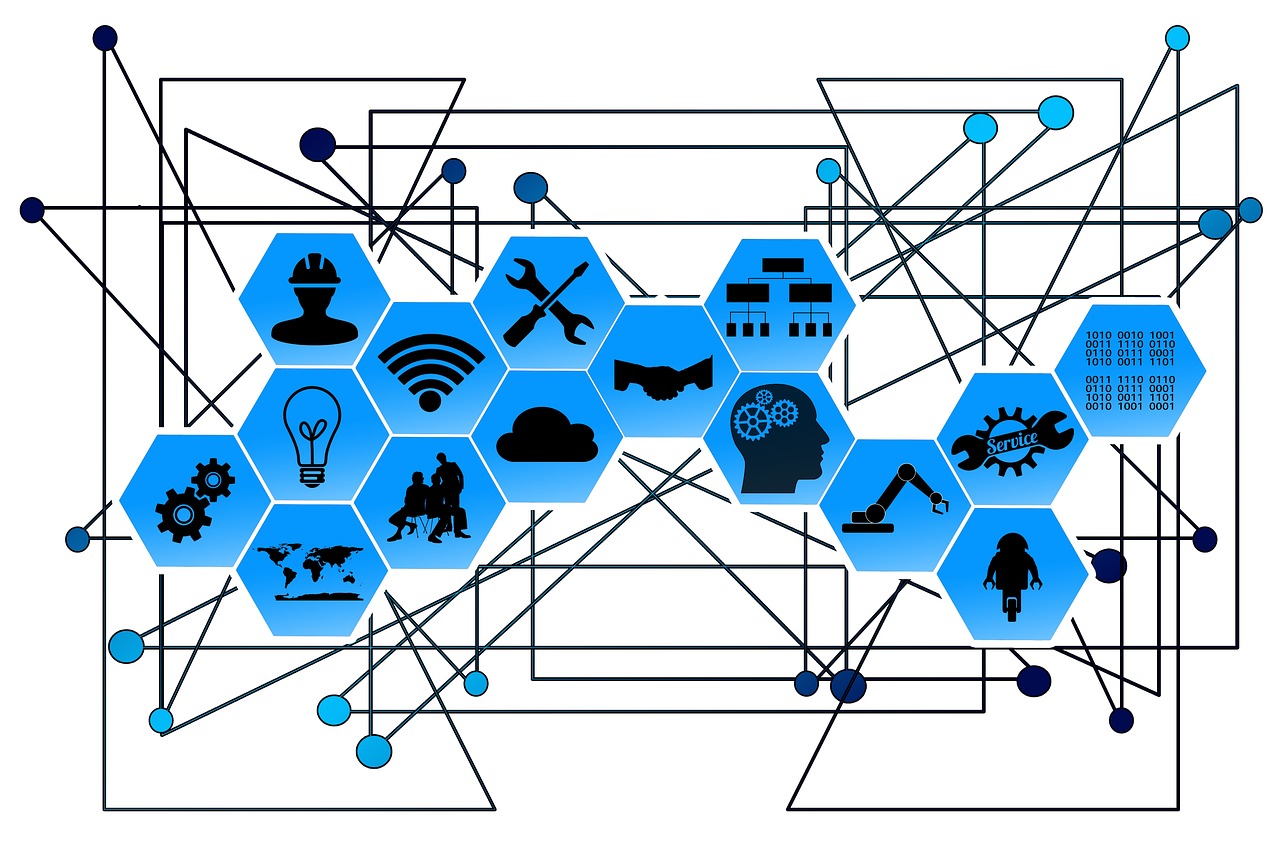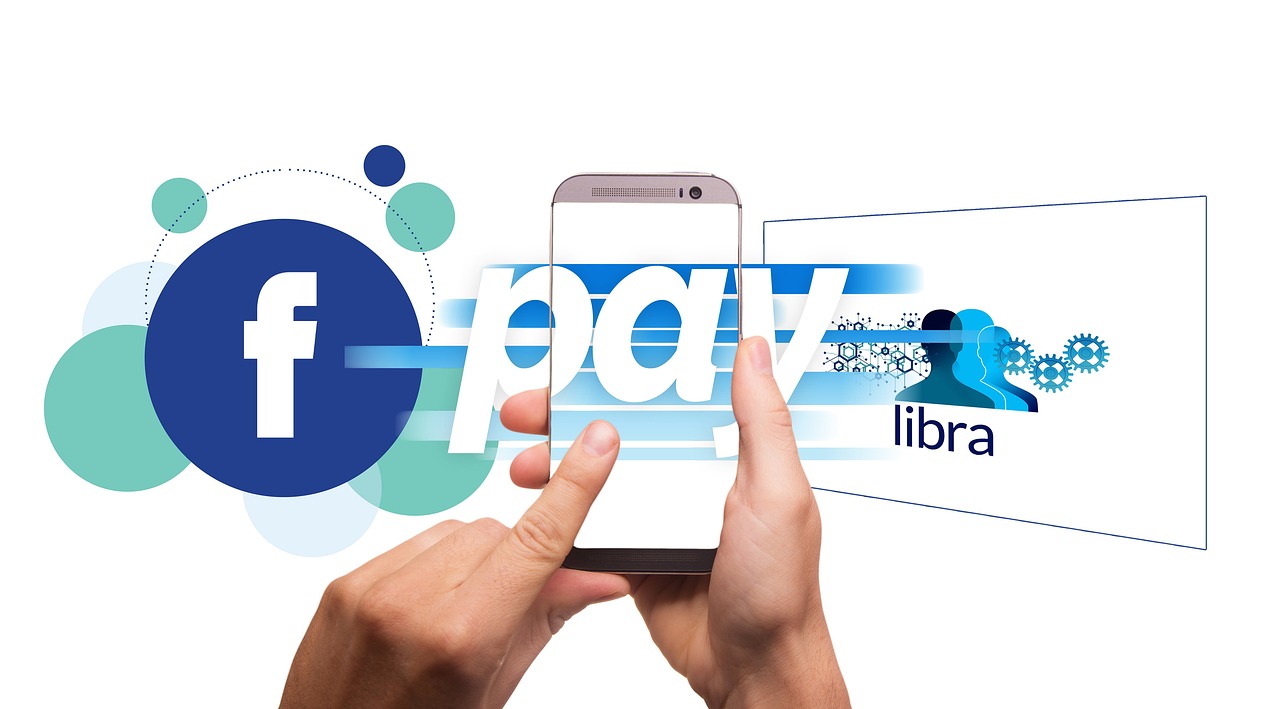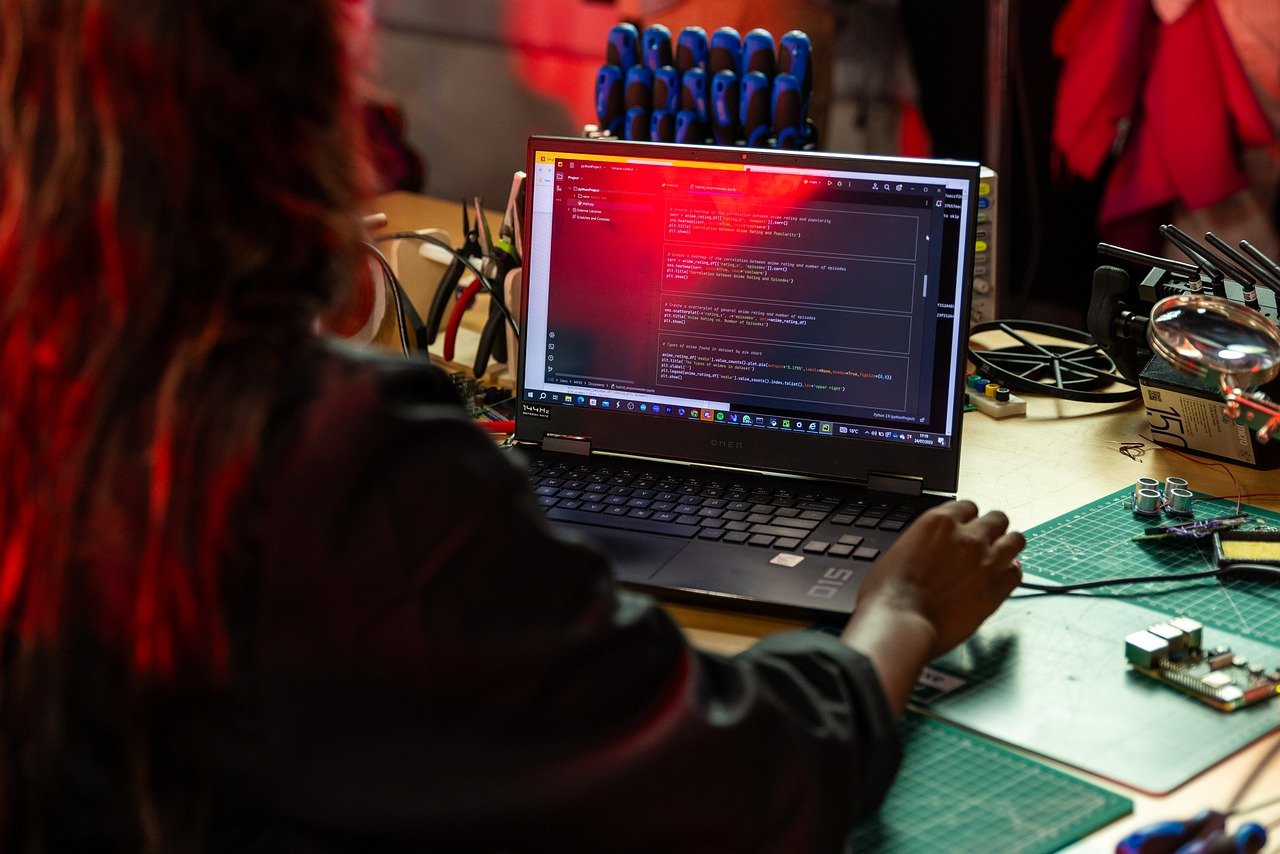How Blockchain Can Revolutionize Intellectual Property Management
In today's digital age, where creativity thrives and ideas flow like a river, protecting intellectual property (IP) has become more crucial than ever. Imagine a world where artists, musicians, and innovators can safeguard their creations without the fear of theft or misuse. Enter blockchain technology, a game-changer that promises to transform how we manage and protect intellectual property rights. By harnessing the power of decentralization, cryptographic security, and transparency, blockchain offers a robust solution to the myriad challenges faced by creators in the traditional IP landscape.
But what exactly is blockchain? Think of it as a digital ledger that records transactions across many computers in such a way that the registered transactions cannot be altered retroactively. This feature not only enhances security but also builds trust among users. With blockchain, every piece of IP can be traced back to its origin, providing undeniable proof of ownership. This is a significant leap forward from the conventional methods that are often fraught with complications and inefficiencies.
The potential of blockchain in intellectual property management is vast. It can streamline processes, reduce costs, and eliminate the middlemen who often complicate ownership rights. Imagine artists receiving their royalties in real-time, or authors knowing exactly who is using their work and how much they are earning from it. This level of transparency and efficiency could revolutionize the creative industries, allowing creators to focus on what they do best—creating.
As we delve deeper into this article, we will explore the specific challenges currently plaguing intellectual property management, the numerous benefits blockchain brings to the table, and real-world examples of how this technology is already making waves in various industries. By the end, you will not only understand the transformative potential of blockchain for IP management but also why it is essential for the future of creativity and innovation.
At its core, blockchain is a decentralized database that allows multiple parties to access, share, and record information securely. Unlike traditional databases that are controlled by a central authority, blockchain operates on a peer-to-peer network. This decentralization means that no single entity has control over the entire system, which significantly reduces the risk of fraud and manipulation.
Blockchain's security is primarily derived from its use of cryptographic techniques. Each transaction is encrypted and linked to the previous one, forming a chain of blocks. This makes it nearly impossible for anyone to alter the data without the consensus of the network. For intellectual property management, this means that once a creator registers their work on the blockchain, it becomes a permanent record that can be easily verified by anyone.
Despite the advancements in technology, traditional intellectual property management systems are riddled with challenges. From lengthy registration processes to high costs and the complexities of enforcing rights across different jurisdictions, the current landscape often leaves creators vulnerable. For example, artists may spend months or even years trying to register their work, only to find that the process is fraught with delays and bureaucratic red tape.
One of the most pressing issues in the realm of intellectual property is the prevalence of fraud and piracy. Creators often find their works being used without permission, leading to lost revenue and diminished control over their creations. The complexity of tracking ownership and usage can also lead to disputes that can drag on for years, draining both time and resources.
Fraud and piracy are rampant in the creative industries. With the rise of the internet, it's easier than ever for individuals to steal or misuse creative works. This not only undermines the rights of creators but also stifles innovation, as individuals may be less inclined to create if they fear their work will be stolen.
Tracking ownership of intellectual property can feel like navigating a labyrinth. With multiple parties involved and varying laws across jurisdictions, disputes can arise over who owns what and how it can be used. This complexity often leads to lost revenue for creators and a lack of clarity in the marketplace.
Blockchain technology offers a myriad of benefits for intellectual property management. By enhancing security, providing transparency, and streamlining processes, blockchain can fundamentally change how we protect and manage creative works. Imagine a world where creators can easily register their work, track its usage, and receive fair compensation without the hassle of intermediaries.
One of the most exciting applications of blockchain in intellectual property management is the use of smart contracts. These self-executing contracts with the terms of the agreement directly written into code can automate transactions and agreements related to IP. This not only ensures compliance but also significantly reduces the potential for disputes.
Smart contracts can facilitate automatic licensing agreements, making it easier for creators to monetize their work while maintaining control over usage rights. For instance, an artist can set specific conditions under which their music can be used, and once those conditions are met, the smart contract automatically executes the licensing agreement.
Imagine receiving your royalties in real-time, without the typical delays associated with traditional systems. Blockchain enables real-time tracking of royalties, ensuring that creators receive fair compensation for their work without unnecessary waiting periods. This level of efficiency can significantly enhance the financial stability of artists and innovators.
As we look at the real-world applications of blockchain in intellectual property management, several industries stand out. From the music industry to the art world, organizations are successfully implementing blockchain technology to enhance their processes and protect their creators.
In the music industry, artists and platforms are leveraging blockchain to manage rights and royalties more effectively. By creating a transparent system that tracks usage and payments, artists can ensure they are compensated fairly while reducing the number of intermediaries involved in the process.
The art world is also experiencing a transformation thanks to blockchain technology, particularly with the rise of non-fungible tokens (NFTs). These digital assets allow artists to establish provenance and ownership of their works, fundamentally changing how art is bought and sold. With blockchain, buyers can be confident that they are purchasing an original piece, and artists can retain control over their creations.
As we look to the future, the intersection of blockchain technology and intellectual property management holds enormous potential. We can anticipate regulatory changes that may impact the adoption of this technology, as well as technological advancements that could further enhance its role in IP management.
The regulatory landscape surrounding blockchain and intellectual property is still evolving. As governments and organizations work to create frameworks that accommodate this technology, it is crucial for creators to stay informed about potential changes that may impact their rights and protections.
Future technological advancements, including integration with artificial intelligence and machine learning, could further enhance blockchain's role in intellectual property management. These innovations could lead to even more efficient systems for tracking usage, enforcing rights, and ensuring fair compensation for creators.
- What is blockchain technology? Blockchain is a decentralized digital ledger that records transactions securely and transparently.
- How can blockchain help in IP management? It enhances security, provides transparency, and streamlines processes, making it easier for creators to protect their work.
- What are smart contracts? Smart contracts are self-executing contracts with the terms directly written into code, automating transactions related to intellectual property.
- How does blockchain prevent fraud and piracy? By providing a transparent and immutable record of ownership, blockchain makes it much harder for unauthorized use of creative works.

The Basics of Blockchain Technology
Blockchain technology is often hailed as a revolutionary force, but what exactly is it? At its core, blockchain is a decentralized digital ledger that records transactions across many computers in such a way that the registered transactions cannot be altered retroactively. This decentralization is crucial because it eliminates the need for a central authority, making the system more resilient to fraud and manipulation. Think of it like a community diary where everyone can see and contribute, but no one can erase what's been written.
One of the standout features of blockchain is its cryptographic security. Each transaction is secured through complex mathematical algorithms, which not only protect the integrity of the data but also ensure that the identity of the parties involved remains confidential. Imagine sending a secret message that only the intended recipient can read—this is akin to how blockchain ensures that transactions are secure and private.
Additionally, blockchain operates on a consensus mechanism. This means that before any transaction is added to the blockchain, it must be agreed upon by a majority of participants in the network. This mechanism not only enhances security but also fosters transparency, as all participants can view the same data. To illustrate this, consider a group of friends deciding on a restaurant; they’ll discuss and agree before making a reservation, ensuring everyone is on the same page.
In the context of intellectual property management, these features of blockchain—decentralization, cryptographic security, and consensus—offer significant advantages. They provide a robust framework for managing and protecting creative works, allowing creators to maintain control over their intellectual property while minimizing the risks of fraud and piracy. As we delve deeper into this article, we will explore how these foundational elements of blockchain can transform the landscape of intellectual property management.
| Feature | Description |
|---|---|
| Decentralization | Eliminates the need for a central authority, enhancing resilience against fraud. |
| Cryptographic Security | Secures data through complex algorithms, ensuring confidentiality and integrity. |
| Consensus Mechanism | Requires agreement from network participants before transactions are validated. |

The Need for Improved IP Management
In today's fast-paced digital age, the need for improved intellectual property (IP) management has never been more critical. With the rapid growth of technology and the internet, creators and innovators are facing an uphill battle to protect their works. Traditional IP management systems are struggling to keep pace, resulting in a myriad of challenges that threaten the rights of artists, inventors, and entrepreneurs alike. Imagine trying to navigate a maze with no clear path—this is what many creators experience in the current IP landscape.
One of the most pressing issues is the rampant fraud and piracy that plagues creative industries. Every day, countless works are stolen or misused without the consent of their creators. This not only diminishes the value of original works but also undermines the very foundation of creativity. The emotional toll on creators can be devastating; after all, pouring heart and soul into a project only to see it exploited can feel like a betrayal. As a result, many creators are left feeling vulnerable, questioning whether their hard work will ever receive the recognition it deserves.
Moreover, the complexity of tracking ownership and usage of creative works adds another layer of frustration. Imagine trying to find a needle in a haystack, only to discover that the haystack is constantly shifting. This is akin to the challenges faced by creators who must navigate convoluted ownership rights, especially when their works are shared across multiple platforms and jurisdictions. Without a clear and efficient system to track and enforce their rights, creators often find themselves embroiled in disputes that can drain their resources and energy.
The lengthy registration processes and high costs associated with traditional IP management further exacerbate these challenges. Many creators, especially independent artists and small businesses, simply cannot afford the time or money required to navigate the existing systems. This leads to a paradox where the very individuals who contribute to innovation and culture are left unprotected and unsupported.
To illustrate the current landscape, let's take a look at some of the specific challenges faced by creators in managing their intellectual property:
| Challenge | Description |
|---|---|
| Fraud | Unauthorized use of creative works, leading to loss of revenue for creators. |
| Piracy | Illegal distribution of works, often through online platforms, making it difficult to enforce rights. |
| Ownership Tracking | Difficulty in determining who owns a work, especially when it has been shared or modified. |
| High Costs | Expensive legal fees and registration costs that deter creators from protecting their works. |
| Lengthy Processes | Slow registration and enforcement processes that leave creators vulnerable. |
In conclusion, the current state of IP management is fraught with challenges that not only hinder the protection of creative works but also stifle innovation. As we look to the future, it's clear that a new approach is needed—one that leverages technology to create a more secure, transparent, and efficient system for managing intellectual property rights. The answer may lie in the revolutionary potential of blockchain technology, which promises to address many of these issues head-on.

Current IP Management Challenges
In today's fast-paced digital landscape, managing intellectual property (IP) is akin to navigating a minefield. The traditional methods of IP management are fraught with challenges that can leave creators feeling frustrated and vulnerable. One of the most pressing issues is the lengthy registration processes that can take months, or even years, to finalize. This delay not only stifles innovation but also creates a significant barrier for creators who are eager to protect their work and start monetizing it.
Moreover, the costs associated with registering and maintaining IP rights can be prohibitively high. For many independent artists and small businesses, these expenses can consume a large portion of their budgets, leaving little room for creative development or marketing efforts. It's a classic case of the rich getting richer while the underdogs struggle to keep their heads above water.
Another critical challenge is the complexity of enforcing rights across different jurisdictions. When a creator's work is used or exploited in a foreign country, navigating the local laws can be an arduous task. This complexity often leads to disputes that can drag on for years, draining resources and energy from the very creators who should be focusing on their art. In fact, it's not uncommon for creators to simply give up on pursuing their rights altogether, which only emboldens infringers.
Additionally, the prevalence of fraud and piracy in the creative industries cannot be overlooked. With the rise of the internet, it's easier than ever for individuals to steal and distribute creative works without permission. This rampant piracy not only undermines the rights of creators but also diminishes the value of their work in the eyes of potential buyers. It's like trying to sell a handcrafted piece of art at a flea market while everyone around you is giving away replicas for free.
Lastly, the complexity of ownership tracking poses a significant challenge. As creative works are shared and resold, keeping track of who owns what can become a convoluted process. Disputes over ownership can arise, leading to potential legal battles that can be costly and time-consuming. For creators, this uncertainty can translate into lost revenue and a lack of control over their own creations.
In summary, the current landscape of IP management is riddled with challenges that can hinder creativity and innovation. The lengthy registration processes, high costs, complex enforcement across jurisdictions, rampant fraud, and difficulties in tracking ownership create a perfect storm of obstacles for creators. Fortunately, the advent of blockchain technology offers a beacon of hope, promising to address these issues head-on.
- What is blockchain technology? Blockchain is a decentralized digital ledger that securely records transactions across many computers, making it nearly impossible to alter or hack.
- How can blockchain help with IP management? Blockchain enhances IP management by providing a transparent, secure, and efficient way to register, track, and enforce intellectual property rights.
- What are smart contracts? Smart contracts are self-executing contracts with the terms of the agreement directly written into code, allowing for automated transactions and reducing the need for intermediaries.
- Can blockchain eliminate piracy? While blockchain cannot completely eliminate piracy, it can significantly reduce it by creating a transparent and verifiable system for tracking ownership and usage rights.

Fraud and Piracy Issues
In today's digital age, the creative industries are facing an uphill battle against fraud and piracy. These issues not only threaten the livelihood of artists, writers, and innovators but also undermine the very foundation of intellectual property rights. Fraud can manifest in various forms, from counterfeit products to unauthorized use of copyrighted material, leading to significant financial losses for creators. The rise of the internet has made it easier than ever for individuals to share and distribute creative works, but this convenience comes at a cost. The sheer volume of content available online makes it increasingly challenging to monitor and protect intellectual property, leaving creators vulnerable to exploitation.
Moreover, piracy has evolved into a sophisticated operation, often involving organized networks that specialize in distributing pirated content. This not only affects individual creators but also impacts entire industries, resulting in lost revenues and diminished incentives for innovation. According to recent studies, the global cost of piracy is estimated to reach billions of dollars annually, highlighting the urgent need for effective solutions to combat these challenges.
To illustrate the scope of the problem, consider the following statistics:
| Type of Fraud/Piracy | Estimated Annual Losses (in billions) |
|---|---|
| Counterfeit Goods | $461 |
| Digital Piracy | $29.2 |
| Copyright Infringement | $12.5 |
These figures underscore the pressing need for a robust system to protect intellectual property. Traditional methods of enforcement are often slow and costly, leaving creators with few options to defend their rights. The complexity of international laws further complicates matters, as different jurisdictions may have varying regulations regarding copyright and trademark protections. This patchwork of laws can create loopholes that fraudsters exploit, making it even more difficult for creators to safeguard their work.
As we explore the potential of blockchain technology in the realm of intellectual property management, it becomes clear that addressing fraud and piracy is essential. By leveraging the decentralized and transparent nature of blockchain, we can create a more secure environment for creators to protect their works. Imagine a world where every piece of art, music, or literature is securely recorded on a blockchain, making it nearly impossible for fraudsters to claim ownership or distribute pirated copies without detection.
In conclusion, the fight against fraud and piracy in the creative industries is a battle that requires innovative solutions. As we continue to delve into the transformative potential of blockchain technology, we must remain vigilant in our efforts to protect the rights of creators and ensure that their hard work is respected and rewarded.
- What is intellectual property (IP)? Intellectual property refers to creations of the mind, such as inventions, literary and artistic works, designs, symbols, names, and images used in commerce.
- How does blockchain help in IP management? Blockchain provides a secure and transparent way to register and track intellectual property rights, making it easier to enforce ownership and combat fraud.
- What are smart contracts? Smart contracts are self-executing contracts with the terms of the agreement directly written into code, allowing for automated transactions and reduced disputes.

Complexity of Ownership Tracking
In the ever-evolving landscape of intellectual property (IP), one of the most daunting challenges creators face is the . Imagine a world where you pour your heart and soul into a creative project, only to find that tracking who owns what becomes an overwhelming maze. This complexity can lead to disputes that not only drain resources but also stifle innovation. The traditional methods of managing IP rights often involve cumbersome paperwork, lengthy registration processes, and a lack of centralized databases, making it nearly impossible to keep track of ownership and usage rights.
This situation is exacerbated by the fact that creative works can be easily reproduced and shared in the digital age. When ownership is unclear, it opens the door to potential conflicts and revenue loss. For instance, consider a musician whose song is streamed millions of times but struggles to determine who holds the rights to various versions of that song. Without a clear and efficient method of tracking ownership, the artist may find themselves in a legal battle, diverting their focus from creating new music.
Furthermore, the global nature of the internet complicates matters. IP laws vary significantly across different jurisdictions, which adds another layer of complexity. A creator in one country may have different rights than a collaborator in another, leading to confusion and potential legal entanglements. This is where blockchain technology can step in as a game-changer. By providing a decentralized and transparent ledger, blockchain can simplify the tracking process, ensuring that all parties have access to the same information in real-time.
With blockchain, every transaction related to a creative work can be recorded and verified, allowing for easy tracking of ownership transfers and usage rights. This not only protects the rights of creators but also fosters an environment of trust and collaboration. Imagine a scenario where artists, writers, and inventors can easily verify their ownership and usage rights without the fear of disputes or legal complications. This is the promise that blockchain holds for the future of intellectual property management.
- What is blockchain technology? - Blockchain is a decentralized digital ledger that records transactions across many computers, ensuring that the record cannot be altered retroactively.
- How does blockchain improve IP management? - By providing a transparent and immutable record of ownership, blockchain simplifies tracking and protecting intellectual property rights.
- What are smart contracts? - Smart contracts are self-executing contracts with the terms of the agreement directly written into code, allowing for automated and secure transactions.
- Can blockchain eliminate piracy? - While it may not eliminate piracy entirely, blockchain can significantly reduce it by enhancing tracking and enforcement of ownership rights.

Benefits of Blockchain for IP Management
In today's fast-paced digital world, the need for robust intellectual property (IP) management has never been more critical. Enter blockchain technology, a game-changer that offers a host of benefits for IP management. By leveraging its unique features, creators and innovators can protect their works more effectively than ever before. Imagine a world where every piece of art, music, or invention is securely registered, easily traceable, and virtually immune to fraud. That’s the promise of blockchain.
One of the standout benefits of blockchain is its enhanced security. Since blockchain operates on a decentralized network, it significantly reduces the risk of hacking and unauthorized access. Each transaction is encrypted and linked to the previous one, creating an unbreakable chain of information. This is particularly vital for IP, where the stakes are high, and the consequences of theft can be devastating. With blockchain, creators can rest easy knowing their rights are safeguarded.
Another compelling advantage is transparency. Blockchain provides a public ledger that records every transaction related to intellectual property. This means that ownership and usage rights can be easily verified by anyone at any time. No more guesswork or disputes over who owns what. For artists and inventors, this transparency fosters trust and encourages collaboration, as everyone involved can see the terms of agreements and the distribution of royalties.
Moreover, blockchain streamlines IP management processes, making them more efficient. Traditional methods often involve lengthy paperwork and bureaucratic red tape that can stifle creativity. With blockchain, the cumbersome registration processes can be simplified. For example, once a creator registers their work on the blockchain, it is timestamped and immutable, eliminating the need for extensive paperwork and reducing the time it takes to secure rights. This newfound speed allows creators to focus on what they do best—creating.
Additionally, blockchain enables the automation of many aspects of IP management through the use of smart contracts. These self-executing contracts automatically enforce the terms of agreements without the need for intermediaries. Imagine a musician who wants to license their song. With a smart contract, the licensing agreement can be automatically executed as soon as the song is played, ensuring that the artist receives their royalties instantly. This not only reduces the potential for disputes but also guarantees that creators are fairly compensated in real-time.
Furthermore, the ability to track royalties in real-time is a game-changer. Blockchain technology allows for precise tracking of how and when a creator's work is used, ensuring they receive fair compensation without the usual delays associated with traditional methods. This transparency in financial transactions can significantly boost the confidence of creators in the system, knowing they will be paid promptly for their contributions.
In summary, the benefits of blockchain for IP management are profound and far-reaching. From enhanced security and transparency to streamlined processes and real-time tracking, blockchain is set to revolutionize how creators protect and monetize their work. As we continue to navigate the complexities of the digital age, embracing this innovative technology could very well be the key to safeguarding intellectual property rights for generations to come.
- What is blockchain technology? - Blockchain is a decentralized digital ledger that records transactions across many computers in a way that the registered transactions cannot be altered retroactively.
- How does blockchain enhance IP management? - It enhances IP management through improved security, transparency, and efficiency, making it easier to track ownership and usage rights.
- What are smart contracts? - Smart contracts are self-executing contracts with the terms of the agreement directly written into code, allowing for automatic enforcement of agreements.
- Can blockchain prevent IP theft? - While it cannot completely eliminate IP theft, blockchain significantly reduces the risk by providing a secure and transparent way to register and track intellectual property.

Smart Contracts in IP Management
In the digital age, where information flows like water, the need for **efficiency** and **transparency** in managing intellectual property (IP) has never been more critical. Enter smart contracts—the unsung heroes of blockchain technology that are set to revolutionize IP management. But what exactly are smart contracts? In simple terms, they are self-executing contracts with the terms of the agreement directly written into code. This means that once the conditions are met, the contract automatically executes, eliminating the need for intermediaries and reducing the chances of disputes.
Imagine you're a musician who just released a new single. Traditionally, you'd have to navigate a maze of licensing agreements, payment delays, and potential disputes over royalties. With smart contracts, you can automate these processes seamlessly. For instance, as soon as your song is played on a streaming platform, a smart contract can instantly calculate the royalties owed and transfer the payment directly to your digital wallet. This not only ensures that you get paid promptly but also provides an unprecedented level of **transparency** regarding how your work is being used.
One of the most compelling features of smart contracts in IP management is their ability to facilitate automatic licensing agreements. Think of it as having a digital assistant that not only keeps track of your work but also manages its distribution. With smart contracts, creators can set specific conditions for how their work can be used, such as licensing fees or duration of use. Once someone wants to use your work, they simply need to fulfill the conditions outlined in the smart contract, and the agreement is executed without any hassle. This level of automation not only saves time but also ensures that your rights are protected without constant oversight.
Moreover, smart contracts enable real-time royalties tracking, which is a game-changer for artists and creators. Instead of waiting for months to receive payments, you can see exactly how much you're earning in real-time. This is particularly beneficial in industries like music and film, where revenue can be generated from various sources like streaming, downloads, and licensing. By utilizing blockchain technology, every transaction is recorded and accessible, allowing creators to verify their earnings without relying on third-party audits.
To illustrate the impact of smart contracts in IP management, let’s consider a hypothetical scenario involving a popular video game developer. They release a new game and want to ensure that all contributors, from artists to sound designers, receive fair compensation based on their contributions. By implementing smart contracts, the developer can specify the percentage of revenue each contributor receives based on predefined metrics, such as game sales or in-game purchases. As sales occur, the smart contracts automatically distribute payments, ensuring that everyone gets their fair share without any disputes or delays.
In summary, smart contracts are not just a technological innovation; they represent a paradigm shift in how we think about intellectual property management. By automating processes, enhancing transparency, and ensuring fair compensation, they empower creators and innovators to focus on what they do best—creating. As we move forward, the integration of smart contracts into IP management will likely become the norm, paving the way for a more equitable and efficient creative economy.
- What are smart contracts? Smart contracts are self-executing contracts with the terms written directly into code, allowing for automated execution when conditions are met.
- How do smart contracts benefit IP management? They enhance efficiency, reduce disputes, automate licensing agreements, and enable real-time tracking of royalties.
- Are smart contracts secure? Yes, smart contracts are built on blockchain technology, which provides a high level of security and transparency.
- Can anyone use smart contracts for their intellectual property? Yes, any creator or innovator can implement smart contracts to manage their IP rights and streamline their processes.

Automation of Licensing Agreements
Imagine a world where the complexities of licensing agreements dissolve into thin air, leaving behind a streamlined, efficient process that benefits both creators and consumers. This is the promise of smart contracts powered by blockchain technology. By automating licensing agreements, blockchain not only simplifies the transaction process but also ensures that all parties adhere to the terms without the need for intermediaries. In traditional systems, licensing agreements can be cumbersome, often requiring extensive legal consultations and lengthy negotiations. But with smart contracts, everything is coded directly into the blockchain, allowing for a seamless execution of terms that can be instantly verified and enforced.
So, how does this work in practice? When a creator uploads their work onto a blockchain platform, they can set specific licensing terms directly into a smart contract. These terms might include how the work can be used, the duration of the license, and the compensation structure. Once the contract is created, it automatically executes whenever someone wishes to use the work, eliminating the need for back-and-forth communications. This not only saves time but also reduces the risk of misunderstandings or disputes over the terms of usage.
Furthermore, the transparency of blockchain technology ensures that all transactions are recorded and traceable. This means that both creators and users can easily access the history of the licensing agreement, providing a clear audit trail. For example, if a song is licensed for use in an advertisement, the smart contract will automatically distribute the agreed-upon royalties to the artist as soon as the advertisement airs. This real-time processing ensures that creators receive their fair share without unnecessary delays.
To illustrate the potential impact of automating licensing agreements, consider the following table that highlights the differences between traditional licensing processes and those facilitated by blockchain:
| Aspect | Traditional Licensing | Blockchain Licensing |
|---|---|---|
| Time to Execute | Weeks to Months | Instant |
| Intermediaries Involved | Multiple (lawyers, agents) | None |
| Transparency | Limited | Full |
| Royalty Payments | Delayed | Real-Time |
This transformation in the licensing landscape is not just theoretical; it's already happening. Artists, filmmakers, and software developers are beginning to embrace this technology, recognizing that smart contracts can provide a level of control and security that traditional methods simply cannot match. As more creators turn to blockchain for their licensing needs, we can expect to see a significant shift in how intellectual property is managed across various industries.
In conclusion, the automation of licensing agreements through blockchain technology represents a revolutionary shift in the way creators protect and monetize their work. By eliminating unnecessary complexities and ensuring immediate compliance with licensing terms, smart contracts empower creators to focus on what they do best: creating.
Q: What are smart contracts?
A: Smart contracts are self-executing contracts with the terms of the agreement directly written into code. They run on blockchain technology, allowing for automatic execution of contractual terms.
Q: How does blockchain improve transparency in licensing?
A: Blockchain provides a public ledger of all transactions, making it easy for parties to verify the terms of the agreement and track usage without ambiguity.
Q: Can smart contracts be modified after they are created?
A: Once a smart contract is deployed on the blockchain, it cannot be altered. However, new contracts can be created to replace or amend previous agreements.
Q: What industries can benefit from automated licensing agreements?
A: Various industries, including music, film, art, and software development, can benefit from automated licensing agreements as it simplifies the process of monetizing creative works.

Real-Time Royalties Tracking
In the ever-evolving landscape of intellectual property, one of the most significant challenges has been ensuring that creators receive fair compensation for their work. Traditional systems often involve lengthy processes that delay royalty payments, leading to frustration for artists, authors, and other creators. However, with the advent of blockchain technology, is becoming a reality, revolutionizing how creators are compensated.
Imagine a world where every time a song is streamed, a digital ledger automatically records the transaction, instantly calculating the royalties owed to the artist. This is the power of blockchain—its decentralized nature allows for transparent and tamper-proof tracking of every usage of a creative work. By utilizing smart contracts, these transactions can be executed automatically, ensuring that payments are made promptly without the need for intermediaries. This not only reduces administrative burdens but also increases the overall efficiency of the royalty distribution process.
Moreover, real-time tracking means that artists can access their earnings data at any moment. They no longer have to wait for quarterly or annual statements to understand how their work is performing in the market. This immediate access to data empowers creators, giving them the ability to make informed decisions about their careers and marketing strategies. For instance, if a certain song is gaining traction, an artist can quickly analyze the data and decide to promote it further or even arrange live performances based on its popularity.
To illustrate this concept, consider the following table showcasing the differences between traditional royalty tracking and blockchain-enabled tracking:
| Aspect | Traditional Tracking | Blockchain Tracking |
|---|---|---|
| Payment Speed | Delayed (weeks to months) | Instant |
| Transparency | Limited visibility | Full visibility |
| Intermediaries | Multiple (labels, distributors) | None or minimal |
| Data Access | Periodic reports | Real-time dashboard |
This transformation in tracking not only benefits individual creators but also the entire industry. By fostering a more equitable system, blockchain can help to rebuild trust between creators and platforms. Artists can feel confident that they are being compensated fairly, while platforms can attract more talent by offering transparent and reliable payment systems.
As we look ahead, it’s clear that real-time royalties tracking powered by blockchain technology is not just a trend; it’s a fundamental shift in how we manage and respect intellectual property. By embracing this innovation, we can create a more sustainable and fair ecosystem for all creators, ensuring that their hard work is recognized and rewarded promptly. The future of IP management is bright, and real-time tracking is a shining example of how technology can empower creativity.
- What is real-time royalties tracking?
Real-time royalties tracking refers to the ability to monitor and receive payments for creative works as they are used, rather than waiting for periodic reports from traditional systems. - How does blockchain enable real-time tracking?
Blockchain technology allows for transparent and automated tracking of transactions, ensuring that payments are made instantly through smart contracts. - Who benefits from real-time royalties tracking?
Primarily, creators such as artists and authors benefit, but it also enhances the overall industry by promoting transparency and trust. - Is it complicated to implement blockchain for royalties tracking?
While there are challenges in implementation, many platforms are developing user-friendly solutions to make the transition easier for creators.

Case Studies of Blockchain in IP
As we delve into the real-world applications of blockchain technology in intellectual property (IP) management, it becomes clear that this innovative solution is not merely theoretical but is actively reshaping industries. Let's explore some fascinating case studies that highlight how various sectors are leveraging blockchain to enhance their IP processes, ensuring greater security, transparency, and efficiency.
One of the most notable examples comes from the music industry. Traditionally, artists have struggled with issues related to rights management and royalty distribution, often finding themselves at the mercy of intermediaries. However, platforms like Myco are utilizing blockchain to create a decentralized system for managing music rights. By recording every transaction on a public ledger, artists can track their work's usage in real-time, ensuring they receive fair compensation without the usual delays. This not only empowers artists but also reduces the risk of fraud and mismanagement.
Another compelling case can be found in the world of art and digital ownership. The advent of Non-Fungible Tokens (NFTs) has revolutionized how artists sell their work. By using blockchain technology, artists can establish the provenance of their pieces, proving ownership and authenticity in a digital format. Platforms like OpenSea and Rarible have emerged, allowing artists to mint their artworks as NFTs, which are then securely traded on the blockchain. This has not only transformed the buying and selling process but also opened up new revenue streams for creators, as they can earn royalties on secondary sales of their art.
Additionally, the film industry is beginning to explore blockchain's potential for IP management. Companies like FilmChain are developing blockchain-based platforms that facilitate transparent revenue sharing among all stakeholders involved in film production. By automating the distribution of profits through smart contracts, filmmakers can ensure that everyone, from producers to actors, receives their fair share promptly. This innovation addresses long-standing issues of transparency and trust within the industry, making it easier for creators to focus on their craft rather than worrying about financial disputes.
The impact of blockchain on IP management is profound, as it not only streamlines processes but also fosters a culture of trust and collaboration among creators. As more industries begin to adopt this technology, we can expect to see a significant shift in how intellectual property is managed across the board. The future looks bright for creators who leverage blockchain to protect their rights and monetize their work effectively.
- What is blockchain technology?
Blockchain is a decentralized digital ledger that records transactions across multiple computers securely, ensuring that the information cannot be altered retroactively.
- How does blockchain enhance IP management?
By providing a transparent, secure, and immutable record of ownership and usage rights, blockchain reduces fraud, simplifies tracking, and automates processes through smart contracts.
- What are NFTs?
Non-Fungible Tokens (NFTs) are unique digital assets verified using blockchain technology, representing ownership of a specific item, artwork, or piece of content.
- Can blockchain prevent piracy?
While blockchain cannot entirely eliminate piracy, it can significantly reduce it by providing a clear record of ownership and usage rights, making it easier to enforce IP protections.

Music Industry Innovations
The music industry has long been a battleground for artists fighting to retain control over their creations while navigating a labyrinth of intermediaries. However, the advent of blockchain technology is revolutionizing how artists manage their rights and royalties, ushering in a new era of transparency and fairness. Imagine a world where musicians can directly connect with their audience, receive instant payments, and maintain full control over their work—all thanks to blockchain.
One of the most exciting innovations in this space is the use of non-fungible tokens (NFTs). NFTs allow artists to tokenize their music, creating unique digital assets that can be bought, sold, and traded. This not only provides artists with a new revenue stream but also helps them establish ownership and provenance of their work. For instance, a musician can release a limited edition track as an NFT, granting the buyer exclusive rights to that piece. This shift not only empowers artists but also engages fans in a way that traditional methods never could.
Moreover, blockchain platforms are emerging that facilitate direct transactions between artists and fans, eliminating the need for record labels and streaming services. This model allows artists to retain a much larger percentage of their earnings. For example, platforms like Audius and Myco are designed to give musicians the tools to share their music, interact with their audience, and receive payments directly, all while ensuring that their rights are protected through smart contracts.
To illustrate the potential of these innovations, let's look at a few key benefits:
- Direct Revenue Streams: Artists can sell their music and merchandise directly to fans without intermediaries taking a cut.
- Transparent Royalties: Blockchain can provide a clear record of ownership and usage, ensuring that artists are fairly compensated.
- Fan Engagement: By using NFTs and blockchain platforms, artists can create unique experiences for fans, such as exclusive content or VIP access to events.
These innovations are not just theoretical; they are already making waves in the industry. For instance, some artists have successfully launched NFT collections that sold out within minutes, generating significant income and fan engagement. Additionally, the transparency provided by blockchain means that artists can track where their music is played and how much they are earning in real-time, a feature that was previously elusive.
As the music industry continues to embrace blockchain technology, we can expect to see even more groundbreaking changes. The potential for artists to reclaim their rights and revenue is not just a dream—it's becoming a reality. With each passing day, the traditional music landscape is being reshaped, and the future looks promising for creators who are ready to leverage these innovations.
- What are NFTs and how do they work in the music industry?
NFTs are unique digital tokens that represent ownership of a specific asset, such as a song or album. In the music industry, artists can create NFTs to sell their work directly to fans, providing exclusive rights and experiences. - How does blockchain improve royalty payments for artists?
Blockchain enables transparent tracking of music usage, ensuring that artists receive fair compensation without delays. Smart contracts automate royalty distributions, making the process more efficient and reliable. - Can blockchain eliminate intermediaries in the music industry?
Yes, blockchain allows artists to connect directly with their audience, reducing the need for traditional intermediaries like record labels and streaming services, which often take a large percentage of earnings.

Art and Digital Ownership
In recent years, the art world has witnessed a profound transformation with the advent of blockchain technology, particularly through the rise of Non-Fungible Tokens (NFTs). These digital tokens have revolutionized the way we perceive ownership and provenance in art. Imagine a world where every piece of art, whether physical or digital, comes with a unique digital fingerprint that verifies its authenticity and ownership. This is precisely what blockchain offers—an immutable record that ensures the integrity of creative works.
Traditionally, establishing the ownership of an artwork has been a cumbersome process, often fraught with disputes and a lack of transparency. Artists and collectors alike have struggled with issues such as forgery, misattribution, and the complexities of proving ownership across jurisdictions. However, with blockchain, every transaction involving an artwork can be recorded on a decentralized ledger, making it virtually impossible to alter or erase historical ownership records. This not only protects the rights of artists but also enhances the confidence of buyers in the authenticity of their acquisitions.
Moreover, the rise of NFTs has opened up new avenues for artists to monetize their work. Unlike traditional art sales, where intermediaries such as galleries and auction houses take a significant cut, NFTs allow artists to sell their creations directly to consumers. This direct-to-consumer model not only increases the profits for artists but also fosters a more personal connection between creators and their audience. With each NFT sale, artists can embed smart contracts that ensure they receive a percentage of future sales, providing ongoing revenue streams that were previously unimaginable.
However, the implications of blockchain extend beyond just ownership and sales. It also democratizes access to art. By tokenizing artworks, artists can offer fractional ownership, allowing multiple individuals to invest in high-value pieces. This opens the door for art enthusiasts who may not have the means to purchase an entire artwork but still want to be part of the art world. The potential for community engagement and collective ownership is immense, fostering a new culture of appreciation and investment in the arts.
To further illustrate the impact of blockchain on art and digital ownership, consider the following table that highlights key differences between traditional art ownership and blockchain-based ownership:
| Aspect | Traditional Art Ownership | Blockchain-Based Ownership |
|---|---|---|
| Ownership Verification | Paper certificates, provenance records | Immutable digital ledger |
| Intermediaries | Galleries, auction houses | Direct sales through platforms |
| Revenue for Artists | One-time sale | Royalties on secondary sales |
| Access to Art | Limited to wealthier buyers | Fractional ownership available |
As we look to the future, the intersection of blockchain technology and the art world promises to foster a more equitable and transparent environment for artists and collectors alike. The potential for innovative collaborations and community-driven projects is vast, making it an exciting time to be involved in the arts. With each passing day, more artists are embracing this technology, and as a result, the traditional art landscape is evolving into a more inclusive and dynamic ecosystem.
- What are NFTs? NFTs, or Non-Fungible Tokens, are unique digital assets that represent ownership of a specific item or piece of content, often verified through blockchain technology.
- How does blockchain ensure the authenticity of art? Blockchain creates an immutable record of ownership and transaction history, making it easy to verify the authenticity and provenance of an artwork.
- Can artists earn royalties from their digital art? Yes, through smart contracts embedded in NFTs, artists can earn royalties from future sales of their work.
- What are the benefits of fractional ownership in art? Fractional ownership allows multiple investors to own a share of high-value artworks, making art investment more accessible and democratizing the art market.

Future Trends in Blockchain and IP Management
As we peer into the crystal ball of technology, it's clear that the intersection of blockchain and intellectual property (IP) management is set to evolve dramatically. The future holds exciting possibilities that could redefine how we protect and manage creative works. With the rapid pace of technological advancements, we can anticipate several key trends that will shape the landscape of IP management in the coming years.
One of the most significant trends is the increasing integration of artificial intelligence (AI) with blockchain technology. Imagine a world where AI algorithms can analyze vast amounts of data to automatically track IP usage, detect infringements, and enforce rights in real-time. This synergy could drastically reduce the burden on creators and rights holders, allowing them to focus on what they do best—creating. Furthermore, AI could enhance the efficiency of smart contracts, making them not just automated but also intelligent, capable of adapting to changing circumstances without human intervention.
Another trend to watch is the potential for regulatory changes that could impact blockchain's role in IP management. As governments and regulatory bodies begin to understand the implications of blockchain technology, we may see new laws and frameworks designed to support its use in protecting intellectual property. These regulations could provide a clearer legal standing for blockchain-based IP management systems, fostering greater adoption among creators and businesses alike. However, navigating this evolving landscape will require vigilance and adaptability from all stakeholders involved.
Moreover, the rise of decentralized autonomous organizations (DAOs) presents a novel approach to IP management. DAOs could empower creators to collectively manage their rights and royalties without the need for intermediaries. In this model, artists and innovators could collaborate on projects, share profits, and make decisions democratically, all facilitated by blockchain technology. This shift could lead to a more equitable distribution of resources and opportunities within creative industries, fostering a culture of collaboration rather than competition.
To illustrate these trends, consider the potential impact of blockchain on the gaming industry. With the advent of non-fungible tokens (NFTs), game developers can create unique in-game assets that players can buy, sell, and trade securely on the blockchain. This not only enhances the gaming experience but also provides developers with new revenue streams and players with true ownership of their digital assets. As the gaming community continues to embrace blockchain technology, we can expect to see innovative uses of IP management that prioritize both creator rights and player engagement.
In conclusion, the future of blockchain in IP management is brimming with possibilities. From AI integration and regulatory advancements to the rise of DAOs and NFT innovations, the landscape is changing rapidly. As we navigate this exciting terrain, it's crucial for creators, businesses, and policymakers to stay informed and engaged, ensuring that the benefits of these developments are realized across the board.
- What is blockchain technology? Blockchain is a decentralized digital ledger that records transactions across many computers in a way that the registered transactions cannot be altered retroactively, ensuring security and transparency.
- How does blockchain improve IP management? Blockchain enhances IP management by providing a secure, transparent, and efficient way to track ownership and usage of creative works, reducing fraud and piracy.
- What are smart contracts? Smart contracts are self-executing contracts with the terms of the agreement directly written into code, allowing for automated and secure transactions without the need for intermediaries.
- What role do NFTs play in IP management? NFTs, or non-fungible tokens, represent ownership of unique digital assets on the blockchain, allowing creators to sell and manage their works in a secure and verifiable manner.

Regulatory Considerations
As blockchain technology continues to evolve and integrate into various sectors, the regulatory landscape surrounding its use, especially in the realm of intellectual property (IP) management, becomes increasingly complex. Governments and regulatory bodies around the world are grappling with how to effectively oversee this innovative technology. With its decentralized nature and potential to disrupt traditional systems, blockchain raises a myriad of questions regarding compliance, enforcement, and governance.
One of the primary concerns is the lack of standardized regulations across jurisdictions. Different countries have varying approaches to blockchain, which can create confusion and uncertainty for creators and businesses operating internationally. For instance, while some nations are embracing blockchain with open arms, others are imposing strict regulations or outright bans. This inconsistency can hinder the global adoption of blockchain solutions for IP management.
Furthermore, the concept of digital ownership presents unique challenges for regulators. How do we define ownership in a digital space where assets can be copied and shared infinitely? This question is particularly pertinent in the context of non-fungible tokens (NFTs) and other blockchain-based assets. Regulatory bodies must determine how existing IP laws apply to these new forms of ownership and whether new laws are necessary to address the specific nuances of blockchain technology.
Another critical aspect is the need for consumer protection. As blockchain enables creators to engage directly with their audience, it also opens the door to potential fraud and scams. Regulators must ensure that there are adequate protections in place to safeguard consumers from malicious actors who may exploit the technology. This includes clear guidelines on how transactions should be conducted and how disputes should be resolved.
To illustrate the regulatory challenges, consider the following table that summarizes key regulatory concerns and potential solutions:
| Regulatory Concern | Description | Potential Solution |
|---|---|---|
| Lack of Standardization | Inconsistent regulations across countries hinder global adoption. | Develop international standards for blockchain technology. |
| Digital Ownership | Defining ownership of digital assets is complex. | Revise IP laws to include provisions for digital assets. |
| Consumer Protection | Potential for fraud and scams in blockchain transactions. | Implement strict consumer protection regulations. |
As we look to the future, it's clear that regulatory considerations will play a crucial role in shaping the landscape of blockchain technology in IP management. Stakeholders must engage in ongoing dialogue with regulators to ensure that the framework surrounding blockchain is robust, adaptable, and conducive to innovation. By doing so, we can harness the full potential of blockchain while safeguarding the rights of creators and consumers alike.
- What is blockchain technology? Blockchain is a decentralized digital ledger that records transactions across many computers securely and transparently.
- How can blockchain help with intellectual property management? It enhances security, transparency, and efficiency in tracking ownership and usage of creative works.
- What are smart contracts? Smart contracts are self-executing contracts with the terms of the agreement directly written into code, allowing for automation in transactions.
- What challenges does blockchain face in regulation? Key challenges include standardization, defining digital ownership, and ensuring consumer protection.

Technological Advancements
The landscape of intellectual property management is on the cusp of a significant transformation, thanks to the rapid advancements in technology. As we delve deeper into the realm of blockchain, we see its potential being amplified by the integration of cutting-edge technologies such as artificial intelligence (AI) and machine learning (ML). These innovations are not just buzzwords; they are the driving forces behind a new era of efficiency and security in managing intellectual property.
Imagine a world where your creative work is not only protected but also monitored in real time by intelligent systems that learn and adapt. AI can analyze vast amounts of data to identify patterns and predict potential infringements, alerting creators before issues arise. This proactive approach is a game-changer, shifting the focus from reactive measures to preventive strategies. For instance, AI algorithms could scan the internet to detect unauthorized use of a song or a piece of artwork, allowing creators to take swift action.
Moreover, the synergy between blockchain and AI can facilitate smarter contracts. These contracts can autonomously execute transactions based on predefined conditions, which are analyzed by AI. For example, if a piece of music is played on a streaming service, the smart contract can automatically distribute royalties to the artist without any manual intervention. This not only saves time but also ensures that creators are compensated fairly and promptly.
Another exciting development is the potential for decentralized autonomous organizations (DAOs) in the realm of IP management. DAOs can be programmed to manage and enforce IP rights collectively, allowing creators to have a say in how their works are used and monetized. This democratization of IP management could lead to a more equitable distribution of resources among creators, reducing the power of intermediaries who often take a large cut of the profits.
As we look to the future, the possibilities seem limitless. The integration of blockchain with advancements in AI and ML could pave the way for a more transparent, efficient, and equitable system of managing intellectual property. However, it’s essential to remain vigilant about the regulatory landscape. As technology evolves, so too must the laws and regulations that govern it. Ensuring that these advancements are implemented ethically and responsibly will be crucial in maintaining the trust of creators and consumers alike.
In summary, the convergence of blockchain technology with AI and machine learning is set to revolutionize the way we manage intellectual property. By harnessing the power of these technologies, we can create a more secure, transparent, and efficient system that benefits everyone involved in the creative process.
- What is blockchain technology?
Blockchain is a decentralized digital ledger that records transactions across many computers in such a way that the registered transactions cannot be altered retroactively. - How does blockchain enhance IP management?
Blockchain enhances IP management by providing a secure, transparent, and efficient way to track ownership and usage rights, reducing fraud and piracy. - What are smart contracts?
Smart contracts are self-executing contracts with the terms of the agreement directly written into code, allowing for automated transactions without the need for intermediaries. - Can AI help in detecting IP infringements?
Yes, AI can analyze data to identify patterns and detect potential infringements, allowing creators to act before problems escalate. - What role do DAOs play in IP management?
DAOs can manage and enforce IP rights collectively, giving creators more control over how their works are used and monetized.
Frequently Asked Questions
- What is blockchain technology?
Blockchain technology is a decentralized digital ledger that records transactions across many computers in a way that the registered transactions cannot be altered retroactively. This ensures transparency and security, making it particularly effective for managing intellectual property rights.
- How can blockchain improve intellectual property management?
Blockchain can revolutionize intellectual property management by enhancing security, providing transparent tracking of ownership, automating licensing agreements through smart contracts, and ensuring real-time royalty payments to creators. This addresses many of the challenges faced in traditional IP management.
- What are smart contracts?
Smart contracts are self-executing contracts with the terms of the agreement directly written into code. They automate transactions and agreements related to intellectual property, reducing the need for intermediaries and minimizing disputes.
- What challenges does blockchain address in IP management?
Blockchain addresses several key challenges in IP management, including fraud, piracy, lengthy registration processes, high costs, and the complexities of tracking ownership and usage. By providing a secure and transparent platform, it simplifies these issues significantly.
- Can blockchain help with royalty tracking?
Absolutely! Blockchain allows for real-time tracking of royalties, ensuring that creators receive fair compensation for their work without delays. This transparency helps build trust between creators and platforms.
- Are there real-world examples of blockchain in IP management?
Yes, there are several examples, such as the music industry, where artists and platforms use blockchain to manage rights and royalties more effectively. Additionally, the art world is embracing blockchain, particularly through NFTs, to establish provenance and ownership of digital artworks.
- What are the future trends for blockchain and IP management?
Future trends may include advancements in technology, such as integration with artificial intelligence and machine learning, as well as evolving regulatory frameworks that could impact how blockchain is adopted in intellectual property management.
- How does blockchain enhance security in IP management?
Blockchain enhances security by using cryptographic techniques that make it nearly impossible to alter or forge records. This creates a secure environment for managing intellectual property and protects the rights of creators from fraud and piracy.



















